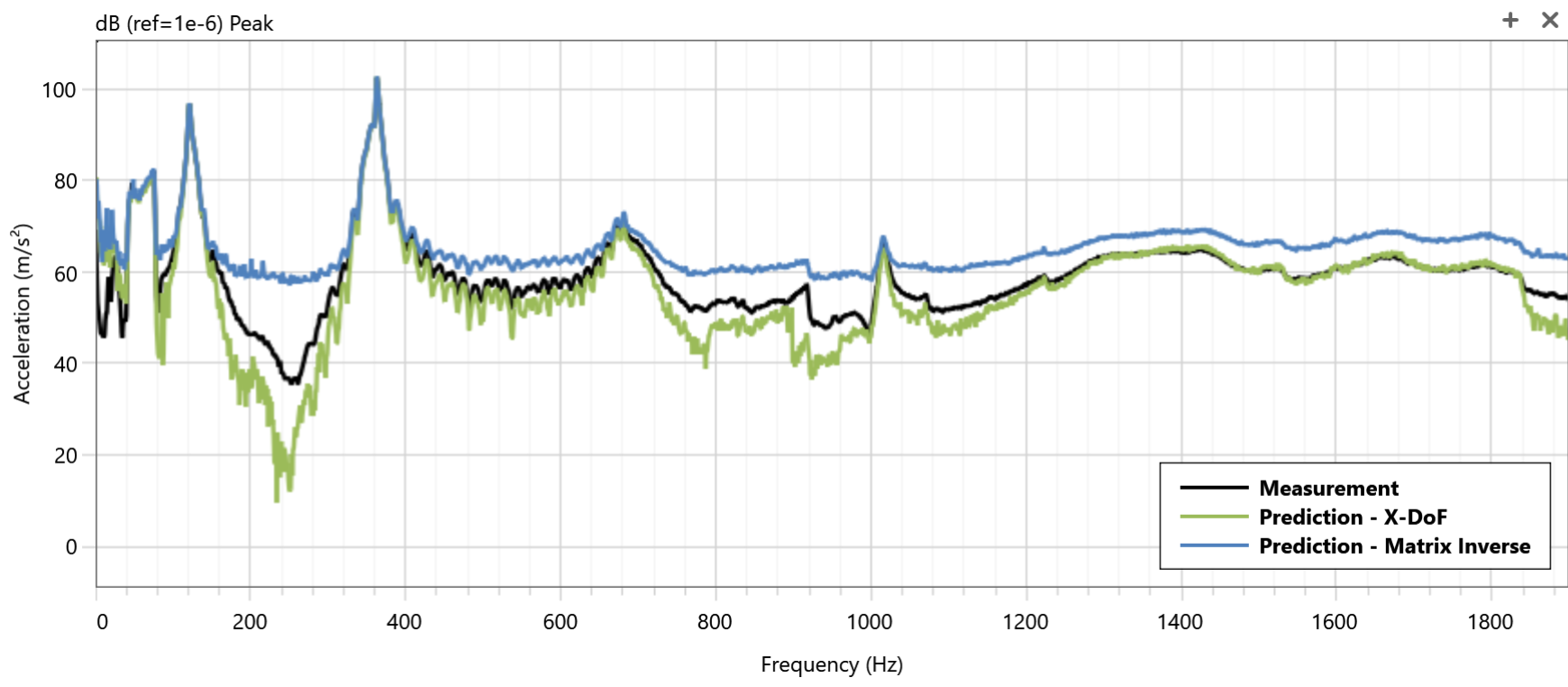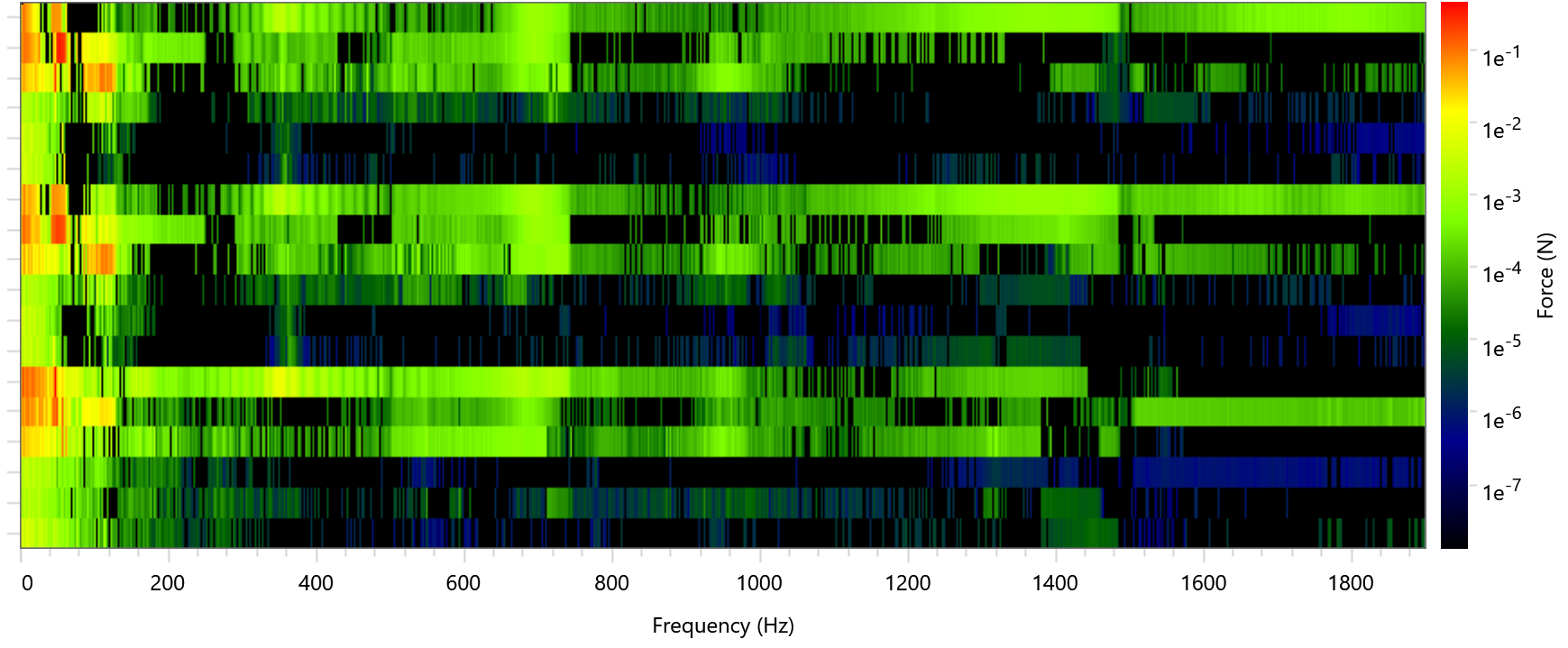X-DoF Improves Your Blocked Forces: Paper Published
02 December 2024
On November 26th, 2024, VIBES’ research paper, authored by Philipp Bofinger, Jelle Boelens, Steven Klassen, and Dennis de Klerk: “X-DoF: Automatic Degree of Freedom Subset Selection for Inverse Blocked Force Characterization” was published on Journal of Vibrations and Acoustics. Below is the summary of our findings.
The current problems
In inverse Blocked Force characterization, selecting the correct set of Degrees of Freedom (DoF) is crucial. The main issues are:
- Overfitting: Including too many DoF can lead to overfitting, where the model fits the noise in the data rather than the actual signal. This results in inaccurate force estimations and poor prediction quality.
- Underfitting: Selecting too few DoF can lead to underfitting, where the model fails to capture the necessary dynamics, leading to incomplete or incorrect force characterizations.
- Manual Selection Challenges: Manually selecting the appropriate DoF is a tedious and error-prone process, especially as the number of possible subsets increases exponentially.
Advantages of X-DoF
The X-DoF procedure offers significant advantages over traditional methods:
- Automatic DoF Selection: X-DoF automatically identifies the relevant subset of Blocked Force DoF, eliminating the need for manual selection and reducing the risk of human error.
- Reduced Overfitting: By selecting only the necessary DoF, X-DoF minimizes overfitting, leading to more accurate force estimations and better prediction quality.
- Improved Robustness to Noise: The method enhances the robustness of the solution to measurement noise, ensuring that the force estimations are not influenced by errors in the data.
- Enhanced Predictive Quality: Experimental results show that X-DoF provides better predictive quality compared to traditional methods, making it a valuable tool for Blocked Force characterization and component TPA.
Overall, X-DoF addresses the key challenges in inverse Blocked Force characterization by providing a systematic and automated approach to DoF subset selection, leading to more accurate and robust Blocked Forces that generalize well to unseen data.
Paper Abstract
Selecting the proper set of Degrees of Freedom is essential in inverse (Blocked) Force calculation. Including too many Degrees of Freedom in the computation can lead to overfitting, resulting in inaccurate force estimations and poor prediction quality. The discrepancy arises from errors within the dataset, such as measurement noise or other artifacts. This paper presents a solution to the overfitting problem, introducing the X-DoF procedure to automatically identify the relevant subset of Blocked Force Degrees of Freedom. Its effectiveness is showcased through numerical and experimental validation and compared against regularization techniques.
If you’re interested in understanding more about X-DoF, fill in the form below to read our research paper in full:
More info
Jelle Boelens
Research Engineer
Jelle joined VIBES after completing his master’s degrees in Systems and Control and Biomechanical Engineering at TU Delft. During his master’s degree he gained experience with optimization and system identification methods. As a research engineer, he now uses this knowledge to develop new technologies and implementing them in our products.
Steven Klaassen
R&D Engineer
Steven finished his Marie Skłodowska-Curie actions PhD programme on experimental joint identification at the TU Munich. He works with the R&D team to translate academia to practical solutions and to keep innovating our method and software, in order to maintain VIBES' position as thoughtleader in the industry.
Dennis de Klerk
Co-founder / Managing Director
Dennis holds a PhD in Engineering Dynamics. His specialties are TPA, Experimental Dynamic Substructuring, Operational System Identification and Experimental Modal Analysis. Dennis is responsible for business development and our partnership with Müller-BBM. Next to that, he is an Assistent Professor at TU Delft, teaching Experimental Dynamics.


